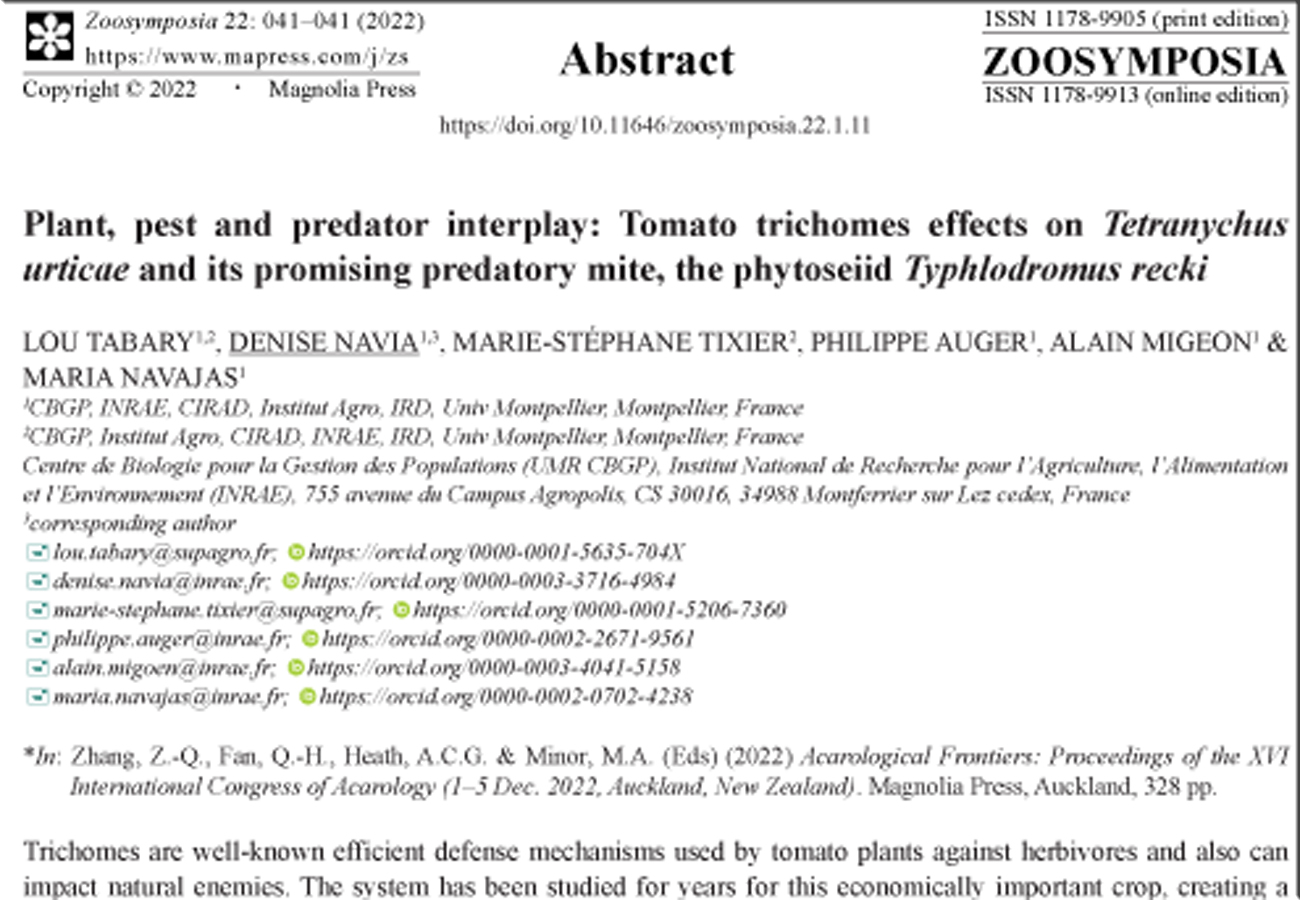Abstract
Trichomes are well-known efficient defense mechanisms used by tomato plants against herbivores and also can impact natural enemies. The system has been studied for years for this economically important crop, creating a pretty good baseline of knowledge of these complex processes. On cultivated tomato and wild relatives Solanum species, a high diversity of glandular and non-glandular trichomes exists, with different densities and locations on the plants depending on varieties/species.
References
-


